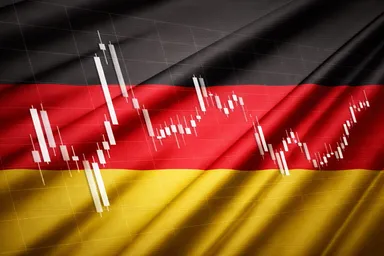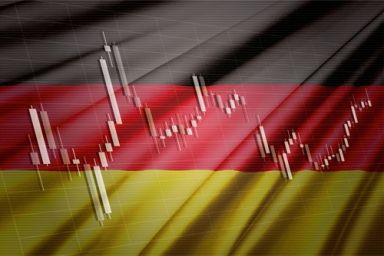The Germany 40 index
The Germany 40 is a tradeable market from Capital.com, enabling you to take a position on the price of the underlying index using CFDs.
The Dax 40 – or Germany 40 on our platform – is a German stock market index which tracks the performance of the top 40 blue-chip companies listed on the Frankfurt Stock Exchange (FS) or Deutsche Börse.
Reviewed every quarter, the index is compiled using a free-float methodology with market capitalisation a key criteria. In order to be included on the index, companies require a minimum free float of 10% – meaning this percentage of its shares must be available to trade.
Constituents also require an operating or legal base in Germany and a listing in the Prime Standard segment of the FSE. Furthermore, stocks also need to be sufficiently liquid, as well as adhere to high standards of financial reporting as discerned by domestic regulatory bodies.
As a closely-followed index, the Germany 40 is often seen as a proxy for German stock market health and the domestic economy.
Some of the largest companies included in the Germany 40 index at the time of writing are SAP (SAP) Siemens (SIE.DE), Airbus (AIR.PA) and Allianz (ALV.DE). Such companies are mainstays at the top of the index, although lesser-capitalised companies are more likely to change position in the index, or even drop out to be replaced by new stocks that have become sufficiently capitalised to join.
To learn more about the Germany 40, you can visit our guide to trading the Germany 40. To trade our Germany 40 market, you can open an account with us – or practise trading the other indices markets on a demo account.
Latest indices articles


FAQs
What is the Germany 40?
The Germany 40 is a tradeable market from Capital.com, which you can trade with CFDs. Its price is based on that of the Germany 40 stock index, which itself represents the performance of the top 40 companies listed on the FSE.
Capital.com’s Germany 40 index market therefore enables traders to take a position on the performance of the top 40 listed companies in Germany, and the health of the German economy as a whole.
How do I trade the Germany 40 index?
You can trade the Germany 40 index with Capital.com using contracts for difference, or CFDs.
CFDs are a financial derivative, which means that they derive their price from an underlying market. Traders can use CFDs to take a position on a market, like the Germany 40, whether its price is moving up or down.
CFDs are a leveraged product, meaning that your capital outlay to open a position (or ‘margin’) is often much smaller than the true size of your position.
While this can enable you to take a position on assets you might not otherwise have access to, it can mean that both gains and losses can be faster and larger than you might anticipate.
Learn more about trading CFDs, and decide whether they could be right for you, with our helpful guide.
What companies are in the Germany 40?
The 40 constituent companies of the Germany 40 are subject to change, but broadly – the Germany 40 index is made up of the top 40 companies listed on the FSE. Those companies with a higher market capitalisation have more of an effect on the Germany 40’s price than others, as the index is weighted by market cap.
However, the constituent companies of the Germany 40 are chosen by more than just market capitalisation. Factors like liquidity, public float, sector capitalisation and more also play a part.
At the time of writing, some of the largest companies in the Germany 40 include SAP, Allianz, Deutsche Telekom and BMW.
What did the Germany 40 close at today?
To see where the Germany 40 index closed today and on preceding days, please check the live Germany 40 chart, or using our platform or app.